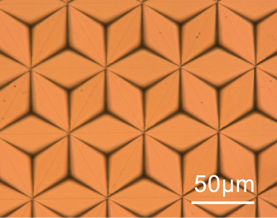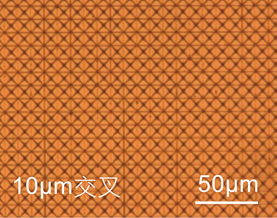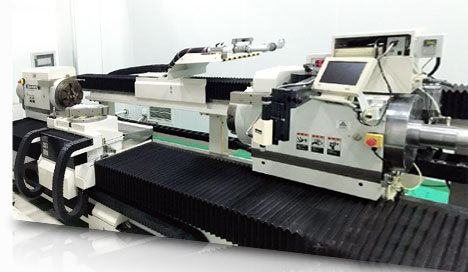Engraving machines


Adopts roller engraving machines from Toshiba
Uses films, such as lenticular/prism sheets for roller engraving. The copperized or electroless nickel-plated rollers can be engraved with the nanometer mirror surface, circular, or spiral groove structure. The engraved structure can be chrome-plated for protection.
- Max roller
diameter600mm - Max roller
length2800mm - Max center
spacing3000mm
Applicable products
- 3D lenticular lens
- BEF enhancement brightness/diffuser/hybrid optical films
- Privacy/reflective/anti-glare films
- Brushed film/optical imprinting micro-structure
Key processes
- Continuous optical film process
- UV materials and curing technique
- High precision film coating and transfer
Main machining workpieces
- Prism Sheet cores for LCD panels
- Lenticular Lens cores for 3D notebooks or TVs
- Linear Fresnel Lens cores
Roller machining example

Roller core (copperization)

Linear V-groove shape specification

Pyramid prism structure

Square pyramid prism structure
Micro structure roller machining method

With the roll-to-roll production technology, the optical film is formed by the optical-class UV resin engraved with a functional micro structure. It is imprinted by the Roll to Roll process and UV curing technology. The mold surface must be a structured processed (such as V-grooving, Pyramid Array, and Lenticular). Its key process includes the continuous transfer, where the precision engraving machine engraves the roller with the micro structure through the Roll to Roll process and UV resin coating technology for the micro structure.





